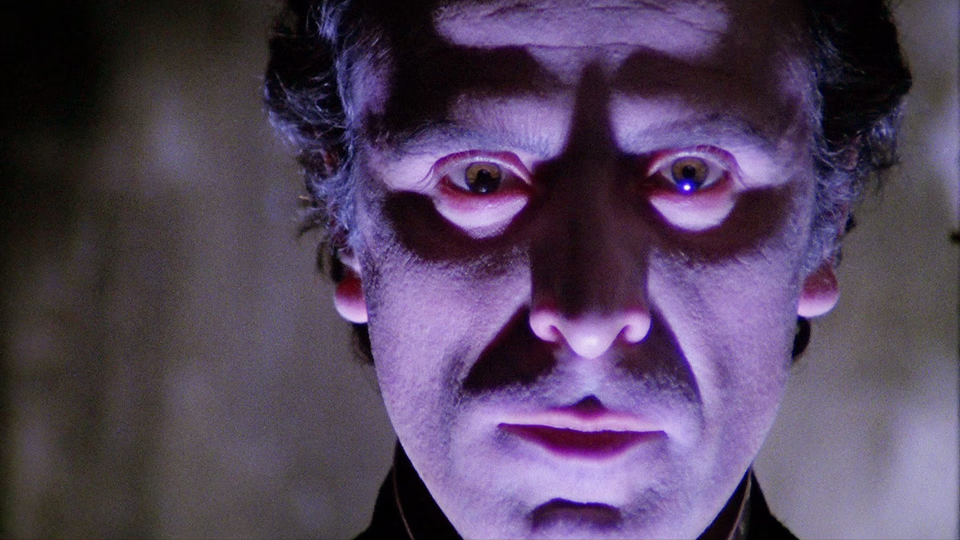City of the Living Dead

Director Lucio Fulci’s gory, surreal horror sees a medium and a reporter travel to the remote New England village of Dunwich to stop an undead priest named Father Thomas from opening the gates to Hell.
The first film in Fulci’s unofficial Gates of Hell trilogy (followed by The Beyond and The House by the Cemetery) proves a masterclass in dread-inducing atmosphere.
Fulci turns a bucolic village into a desolate wasteland. Every exterior shot in flat light, with swirling, dust-leaden winds devoid of wildlife. When the sun sets, shadows drape the streets in black pockets of endless void. Throughout it all, Fabio Frizzi’s score resounds with eerie chants and dissonant synths, as though the soundtrack itself were a kind of incantation.
The film also packs ample gore. A favorite move of Father Thomas and his undead cadre involves appearing behind an unsuspecting victim, grabbing the crown of their scalp and ripping their skull open, exposing oozing pink brain-matter.
Another memorable sequence sees Father Thomas compel a woman to vomit up her intestines. Besides being grotesque, the scene exemplifies Fulci’s surrealistic approach. The supernatural forces defy logic, capable of appearing and disappearing at will and sporting near-infinite power.
This lends the film a nihilistic tone that carries over from Fulci’s prior film, Zombie. Good people struggling against insurmountable evil.
The good people here come via engaging performances from Christopher George and Catriona MacColl. As a smooth-talking reporter, George reminded me of George Segal. One could imagine George’s character as a brother of Segal’s character in California Split.
Opposite George, MacColl, with her London accent, exudes a posh charm that never veers into haughtiness. As he was with Jennifer O’Neill in The Psychic, Fulci seems enamoured with MacColl’s eyes, offering several close ups and shots of her gazing up at the camera.
These likable characters differentiate this film from Fulci’s later efforts, such as The New York Ripper. In The New York Ripper, the protagonists are corrupt and stew in a sordid hell. City of the Living Dead’s protagonists are likable, and Dunwich isn’t a New York sleaze pit.
But lest you worry Fulci had lost his edge, fear not. His biting cynicism remains. Like his earlier film, Don’t Torture a Duckling, this film paints many of the Dunwich townsfolk as bigoted and close-minded. Another gruesome sequence sees one enact vigilante vengeance on a local simpleton via a power-drill. Aside from the visceral violence, it puts the audience in an uncomfortable spot, because the simpleton was guilty of some crimes.
Think of City of the Living Dead as nihilism seasoned with cynicism instead of vice versa.
The film’s biggest weakness is its ending. While consistent with the overall tone, it startles with its abruptness. As though the script called for a disingenuous, happier ending that Fulci abandoned but lacked funding to replace. The result may have emboldened him, however, as—in retrospect—this entry feels like warmup for his nihilistic masterpiece, The Beyond.